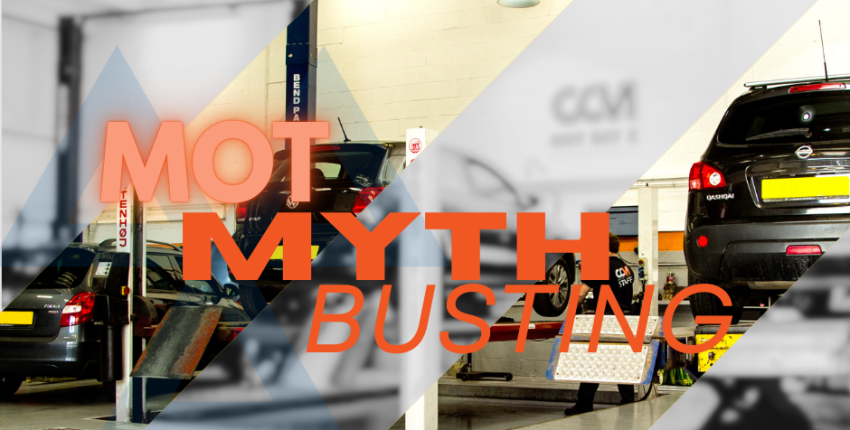
The Road to Confusion
The annual MOT test is a cornerstone of UK road safety, administered under the watchful eye of Britain’s Driver and Vehicle Standards Agency (DVSA), ensuring millions of vehicles are fit for the road. Yet, for something so crucial, it’s surrounded by a surprising amount of misinformation, old wives’ tales, and genuine confusion. These myths don’t just cause unnecessary stress; they can lead to hefty fines, invalidated insurance, and even dangerous situations on the road.
At CCM, we believe that an informed driver is a confident and safer driver. That’s why we’re dedicated to cutting through the noise and bringing you the undeniable facts. Consider this your definitive guide to the most common MOT myths, straight from the experts. Let’s bust some myths and get you on the road with peace of mind!
Myth 1 | "There's a 14-day grace period after my MOT expires."
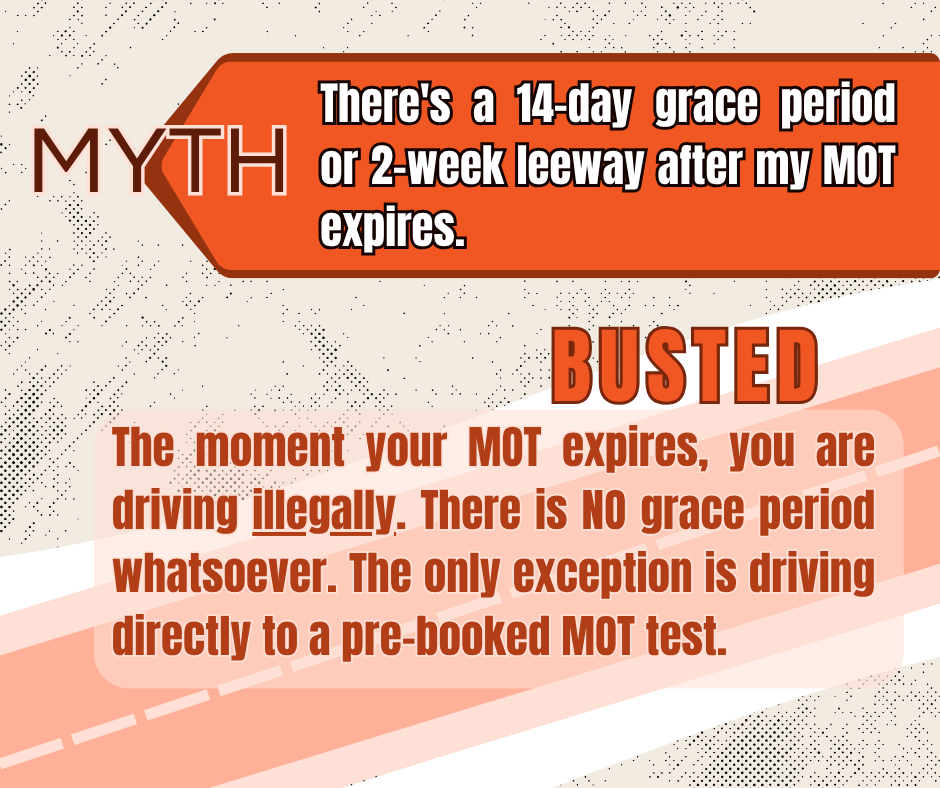
BUSTED! There is absolutely NO grace period.
The moment your MOT certificate expires, your vehicle is illegal to drive on public roads. Driving without a valid MOT can lead to a fine of up to £1,000. More critically, if you’re involved in an accident, your insurance policy could be invalidated, leaving you personally liable for damages and injuries.
When CAN you drive without a valid MOT?
There’s only one legal exception: you can drive your vehicle directly to a pre-booked MOT test or to a garage for pre-booked repairs needed to pass an MOT re-test. Crucially, the vehicle must still be in a roadworthy condition – if it’s deemed dangerous, it cannot be driven at all.
CCM EXPERT TIP
Don't play chicken with your MOT expiry date. You can get your MOT done up to one month (minus one day) before your current certificate runs out, and if you pass, you'll still keep your original renewal date for next year. This is the smart way to give yourself a buffer without breaking the law!
Myth 2 | "If my car fails the MOT, I can just drive it home and then bring it back later."
BUSTED!
The ability to drive your car after an MOT failure depends entirely on the severity of the defects found.
If the car fails with a “Dangerous” defect, you cannot drive it from the premises.
If the failure is due to “Major” defects and your previous MOT is still valid, you can drive the vehicle, but it’s not advised.
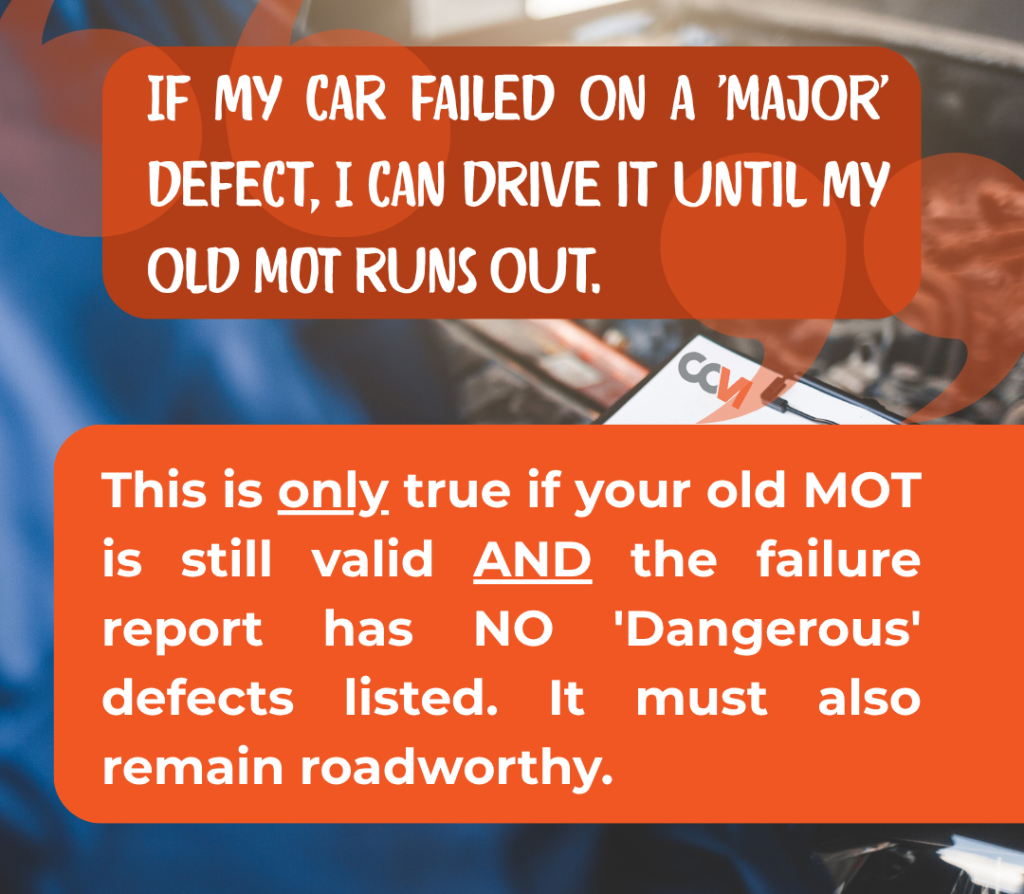
‘Dangerous’ Defects
If your car has any ‘Dangerous’ defects (e.g., exposed tyre cords, severely faulty brakes, steering issues), it is both illegal and unsafe to drive it on public roads. It must be repaired on-site or recovered by a professional. Driving a vehicle with ‘Dangerous’ defects can lead to a fine of up to £2,500, 3 penalty points, and even a court summons.
‘Major’ Defects
If your car fails on ‘Major’ defects but has NO ‘Dangerous’ defects, you might be able to drive it away if your previous MOT certificate is still valid and the vehicle is still considered roadworthy. However, once that previous MOT expires, you are subject to the same rules as driving without an MOT (see Myth 1). It’s a fine line, and often safer and simpler to arrange immediate repairs.
CCM EXPERT TIP
Always check the MOT failure sheet carefully. If you see 'Dangerous' written anywhere, your car is going nowhere under its own power until fixed. We're here to clearly explain your options and help you get back on the road safely and legally.
Myth 3 | "An MOT is the same as a service – it checks everything."
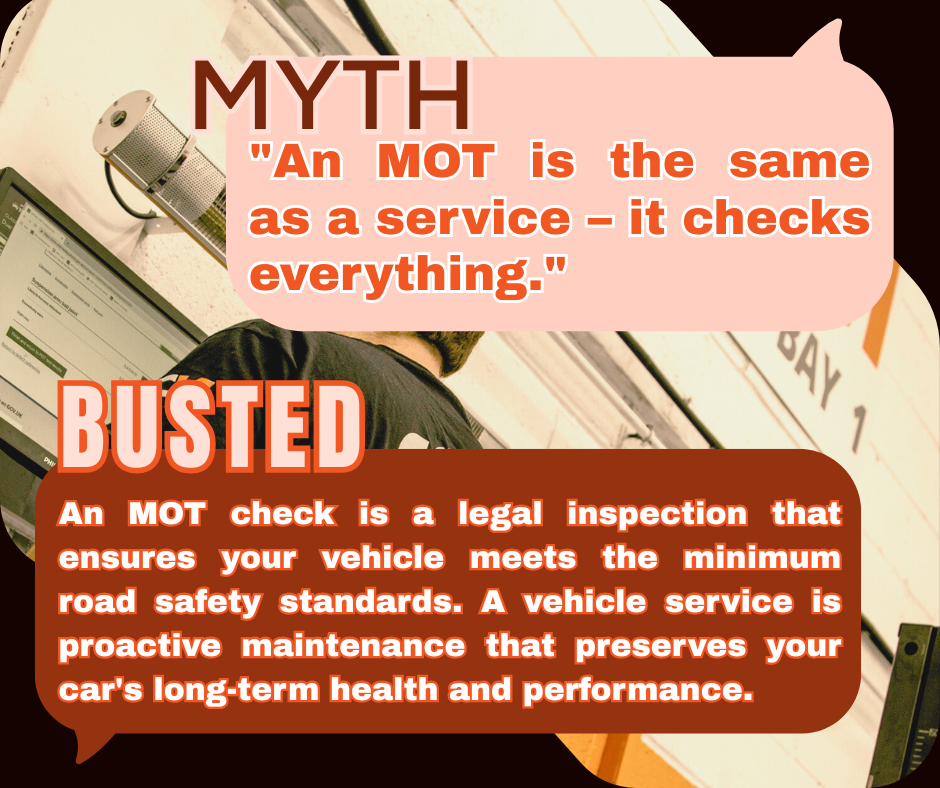
BUSTED!
An MOT is NOT a service, and they serve very different purposes.
A mandatory annual MOT verifies your vehicle meets the minimum road safety and environmental standards at that moment in time.
A vehicle Service is scheduled maintenance at intervals advised by the manufacturer, where worn-out components are replaced, fluids and filters are changed, and potential issues are checked to prevent future breakdowns
The MOT (Ministry of Transport) Test
This is a legal safety inspection. It assesses whether your vehicle meets minimum safety standards and environmental requirements at the time of the test. It checks things like lights, tyres, brakes, steering, suspension, and emissions. It does not check the condition of your engine, clutch, gearbox, oil levels, filters, or spark plugs.
A Vehicle Service (Manufacturer Guided)
This is a maintenance check. A service involves replacing worn parts (like oil and air filters), topping up fluids, and inspecting components to ensure your car runs efficiently, reliably, and to prolong its lifespan. It aims to prevent breakdowns and optimise performance
CCM EXPERT TIP
Think of an MOT as a health check to make sure your car is safe enough to be on the road. Think of a service as your car's regular gym routine and healthy diet to keep it in peak condition. For optimum safety and performance, you need both! We offer comprehensive servicing packages tailored to your vehicle's needs.
Myth 4 | "Small, easy-to-fix things won't cause an MOT fail."

The Surprise Fails BUSTED!
Some of the most common MOT fails are for straightforward and cheap fixes.
Don’t overlook the basics! While major components are critical, many drivers are caught out by minor oversights.
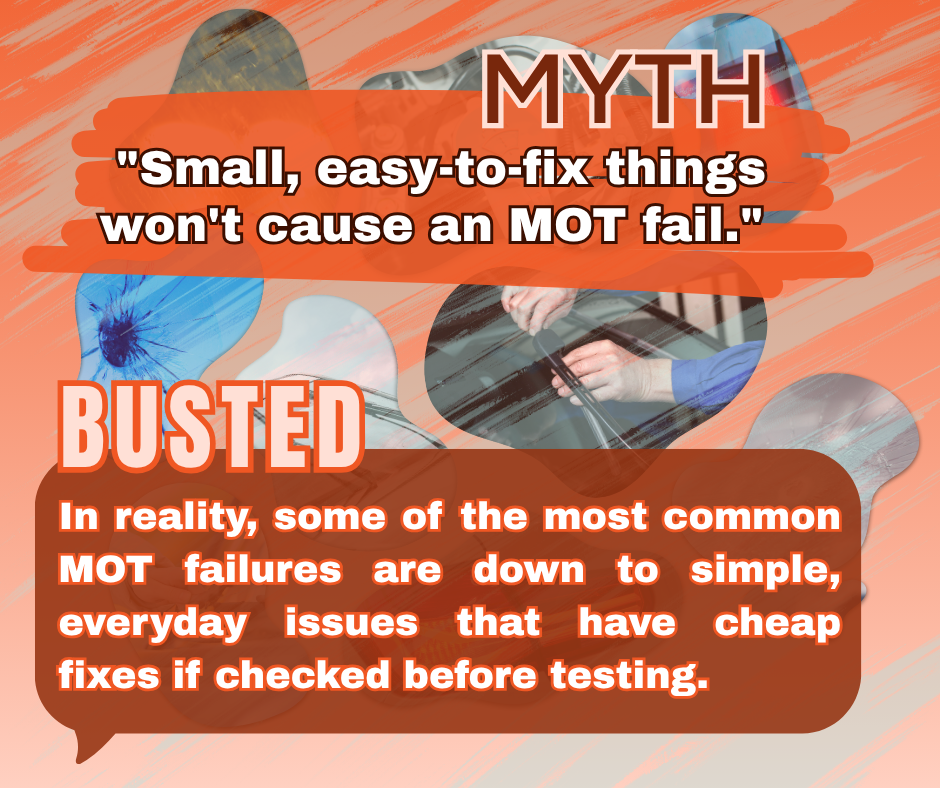
⊗ Empty Windscreen Washer Fluid
Seriously! An empty bottle of screenwash is a ‘Major’ defect and an automatic fail.
⊗ Faulty Bulbs
A single blown brake light, indicator, or even a registration plate light can lead to a failure.
⊗ Worn Windscreen-Wipers
If your wipers don’t clear the screen effectively, especially in the ‘swept area’ in front of the driver, it’s a fail.
⊗ Minor Damage
A chip or crack in the windscreen that obstructs the driver’s view (even small ones in critical areas) can be a fail.
CCM EXPERT TIP
Before bringing your car in, perform a quick 5-minute DIY check: walk around the car to ensure all lights work, top up your screenwash, and check your wipers. These quick checks could save you time and money on a retest!
MOT & Servicing
MOT Testing is an essential (and legal) requirement to keep your vehicle (and you) safe on the road! Book your MOT online today!
Find Out More
